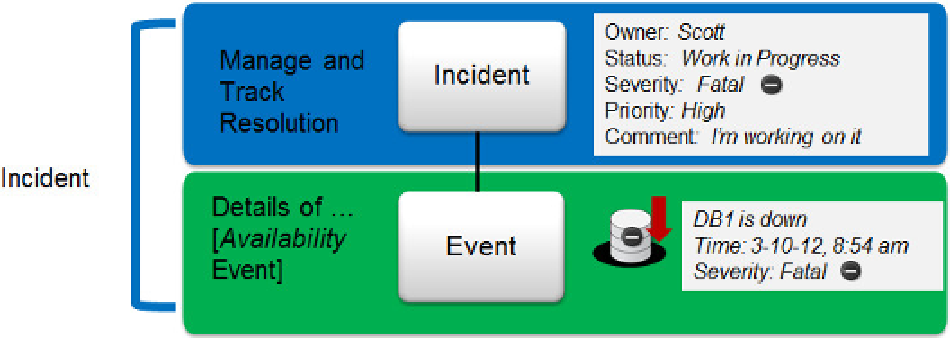Database Reference
In-Depth Information
Standards violations
: If you are using compliance standards, and any of the targets that are
being monitored violate any of those standards, a standards violation event could be raised.
Availability events
: If Enterprise Manager detects that a target is down, an availability event
can be raised.
Other events
: Other types of events can occur as well, such as an SLA alert or High
Availability and Connector External Class. Of course, users can define their own event types
and cause an event to be raised.
All these events signal that particular issues have occurred in the Oracle data center. Across all these events,
you really want to be able to determine which are significant and, from these significant events, be able to correlate
those that are related to the same underlying issue. At the end of the day, what you as an administrator want to
manage is a smaller number of significant incidents. You may have a performance incident that amalgamates a
number of performance events, another incident related to space, and a different incident based on availability
problems. The goal for incident management is therefore to not manage individual numerous events but the smaller
set of more-meaningful incidents. An incident could be a significant event (such as a target being down, for example)
or a combination of events that all relate to the same issue (for example, running out of space could be detected by
Enterprise Manager as separate events raised from the database, host, and storage target types).
Events are significant occurrences in your IT infrastructure that Enterprise Manager detects and raises. Each event
has a set of attributes indicating the type of event, its severity (Fatal, Critical, and so on), the object or entity on which
the event is raised (typically a target, but possibly a job or some other object), the message associated with the event,
the timestamp at which it occurred, as well as the functional category (such as availability, security, and so forth).
Associated with these events are event severities. The first of these, Fatal, is a new severity level in Enterprise
Manager specifically associated with the target availability event type that means the target is down. Critical and
Warning events have the same meaning as they had in previous releases. Next, the Advisory level is typically
associated with compliance standards violation events. The Informational level is used to indicate simply that an
event has occurred, but there is no need to do anything about it.
As noted previously, an incident can contain one or more events. Let's look at the details of an incident with
one event. Figure
12-1
shows an incident with one availability event.
Figure 12-1.
Incident with one event
The event signals that the database
DB1
is down and includes a timestamp indicating when the event was raised.
Because this is a target availability event and the database is down, the severity is marked as Fatal. An incident can
be created for that event, so the incident contains only one event. In order to manage and track the resolution of
the incident, the incident has other attributes such as owner (the Enterprise Manager user who is working on the
incident), status, incident severity (which is based on the event severity), priority, and a comment field.

